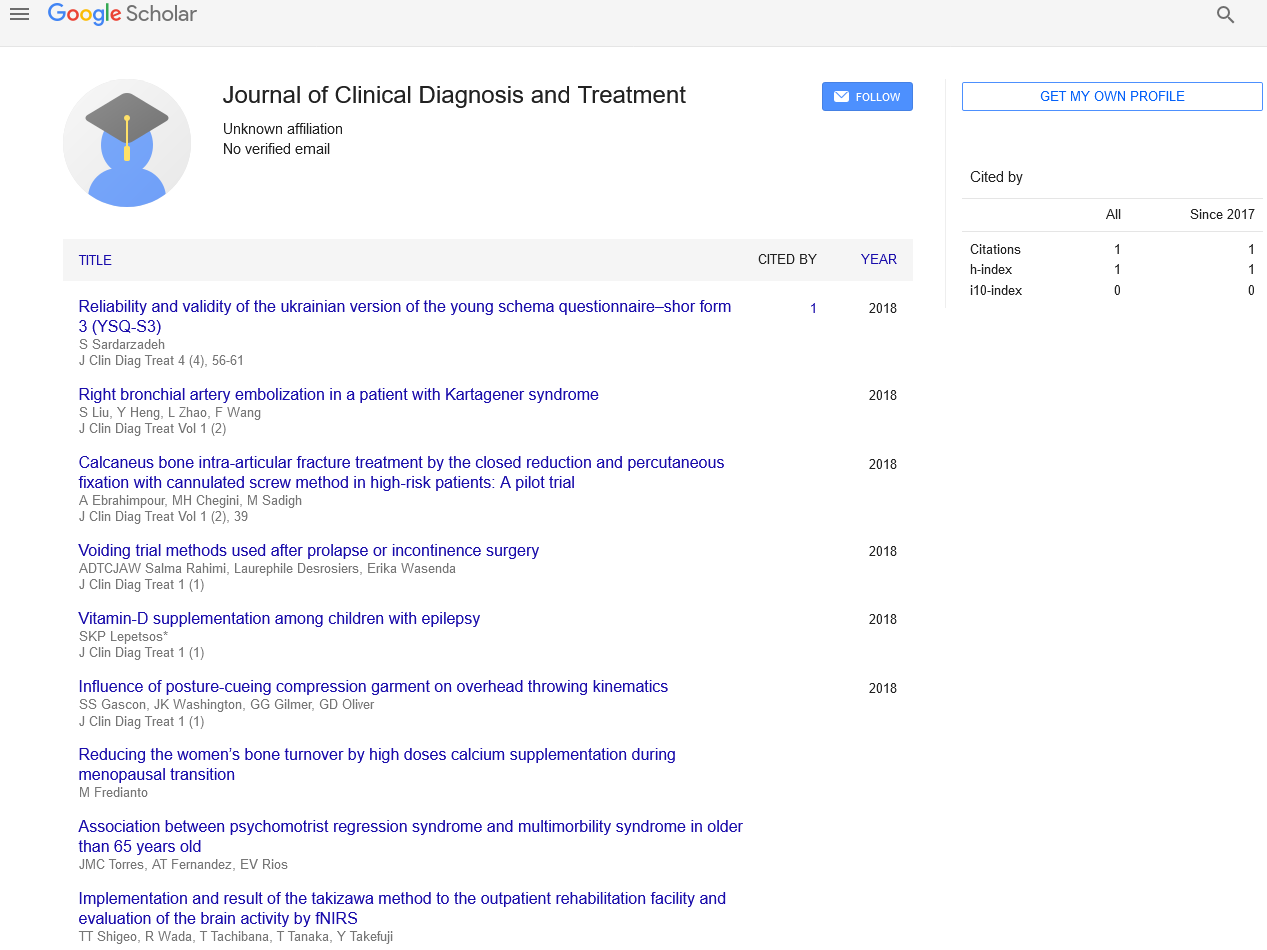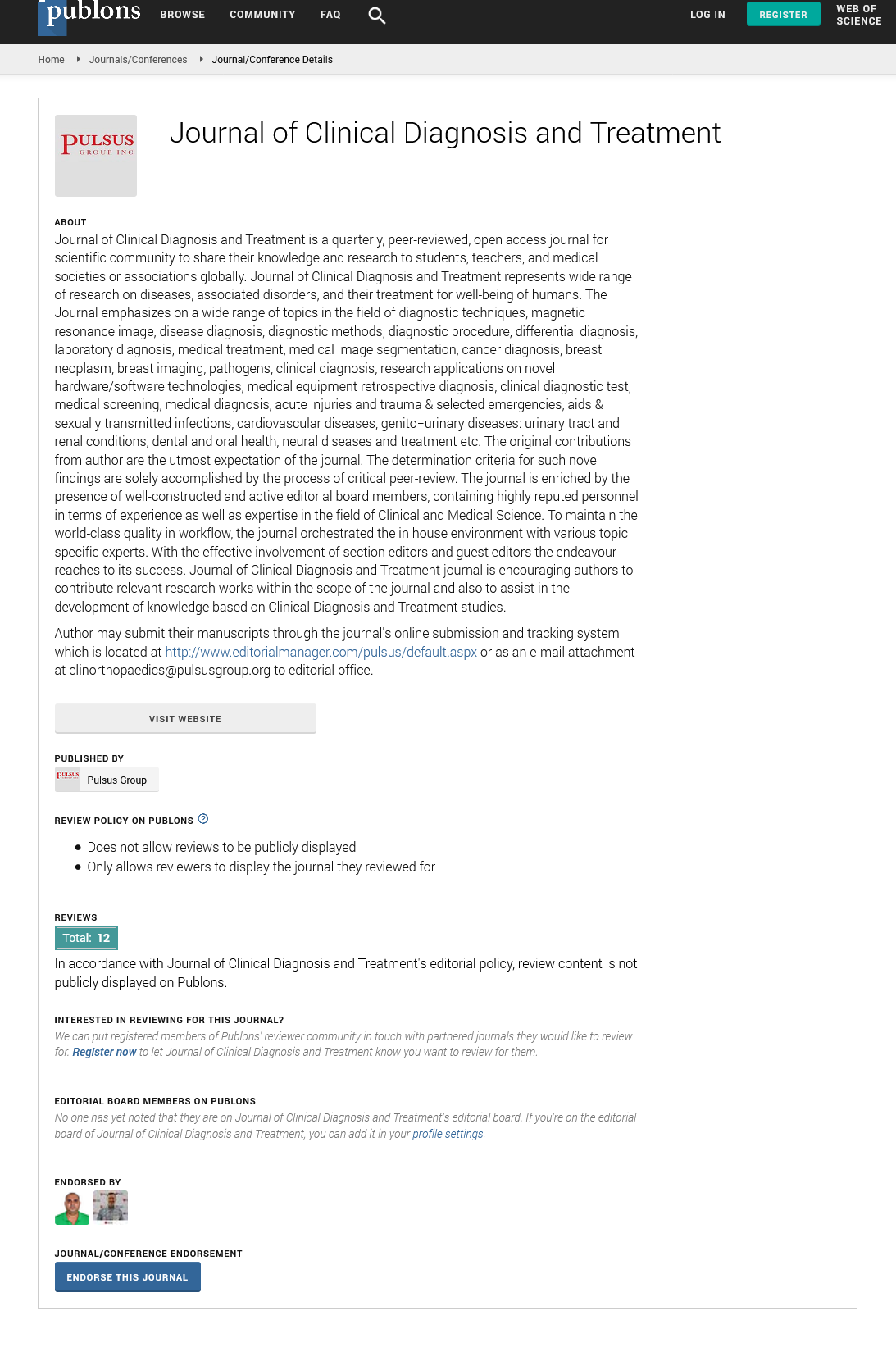Diabetes and dementia: what you need to know
Received: 03-Mar-2023, Manuscript No. puljcdt-22-5920; Editor assigned: 07-Mar-2023, Pre QC No. puljcdt-22-5920(PQ); Accepted Date: Mar 26, 2023; Reviewed: 15-Mar-2023 QC No. puljcdt-22-5920(Q); Revised: 21-Mar-2023, Manuscript No. puljcdt-22-5920(R); Published: 28-Mar-2023, DOI: 10.37532/puljcdt.23.5(1).1-2
Citation: Smith S., Diabetes and dementia: what you need to know J Clin. Diagn.Treat. 2023; 5(1):1-2
This open-access article is distributed under the terms of the Creative Commons Attribution Non-Commercial License (CC BY-NC) (http://creativecommons.org/licenses/by-nc/4.0/), which permits reuse, distribution and reproduction of the article, provided that the original work is properly cited and the reuse is restricted to noncommercial purposes. For commercial reuse, contact reprints@pulsus.com
Abstract
Over the past few decades, the idea that Type 2 Diabetes (T2D) and insulin resistance increase the likelihood of developing dementia and contribute to its aetiology has gained traction. Our knowledge of the direct and indirect effects of T2D on the risk for, beginning of, development of, and underlying pathogenic mechanisms underlying dementia, however, is still lacking. This association also implies thatmeasures for treating or preventing T2D may be advantageous for dementia. Many have undergone in vivo animal evaluations, and some are already in clinical trials. However, more research is needed to decide which single or combination therapy should be used, and when. Additionally, more recent data offers fresh perspectives and intriguing study directions in examining the role of the pathogenic Amyloid-A and tau proteins in T2D.
Key Words
Dementia, Alzheimer's disease, Cholesterol, Gestational
Introduction
Type 2 diabetes is more widespread in our culture than ever before as a result of rising weight, inactivity, and ageing trends. Since 2000, there has been a 5% increase in premature mortality in high-income nations due to a decline in diabetes-related fatalities from 2000 to 2010, followed by an increase from 2010 to 2016. The fact that type 2 diabetes is now routinely diagnosed in kids is especially concerning, as a result of their weight and inactivity. The link between type 2 diabetes and an elevated risk of heart disease and stroke has been well-established for many years. The chance of developing dementia is also increased by diabetes, according to more recent studies. The question of whether the age at which diabetes first manifests itself affects your risk of dementia development has not yet been researched.
Dementia and diabetes
An excessive amount of glucose (a form of sugar) is present in the blood when someone has diabetes. Insulin is a hormone that the pancreas produces that controls blood glucose levels. Diabetes can result in insufficient insulin production from the pancreas or improper insulin function (insulin resistance). Blood glucose levels rise due to this, which can cause health issues like kidney and eye damage. Every day, over 280 Australians are given a diabetes diagnosis, and 20% of persons over the age of 65 have the disease. The majority of cases of diabetes are type 2. Type 1 and gestational diabetes are further kinds of diabetes (diabetes diagnosed in pregnancy). Healthy food, regular exercise, and medication can control diabetes (which may include insulin). A group of signs and symptoms brought on by illnesses of the brain are referred to as dementia. Mental and behavioral processes as well as daily functions are all impacted by dementia. There are numerous varieties of dementia; it is not one particular disease. The most prevalent varieties of dementia are frontotemporal dementia, Alzheimer's disease, vascular dementia, Lewy body dementia, and Lewy body disease. Alzheimer's disease is not a typical component of ageing, but the risk of having it rises with age. A little more than 10% of Australians 65 and older have dementia. 3 out of 10 people who are above 85 years old make up this group.
What ties diabetes and dementia together?
Alzheimer's disease, vascular dementia, and other types of dementia have all been linked to type 2 diabetes, according to studies.
This is true because cardiovascular issues, which also raise the chance of type 2 diabetes and dementia, are risk factors for both conditions. These include: being overweight, having a heart condition or a family history of heart disease, having damaged blood vessels, having circulatory issues, having high cholesterol, and having high blood pressure.
Additionally, studies have shown that individuals with Alzheimer's disease brains do not utilize glucose efficiently, much like those with diabetes. The brain's capacity to decipher messages is lowered as a result of nerve cell loss, which may be the reason for this. Vascular dementia is a condition when brain cells stop communicating with one another because of a lack of oxygen in the blood.
Lowering your chances of diabetes and dementia
1. Consume a diet full of vitamins B6 and B12, folate, and vitamin D to maintain good health.
2. Frequently engaging in physical and mental exercise
3. Always challenge yourself, keep up with social activities, and use a helmet when doing sports.






